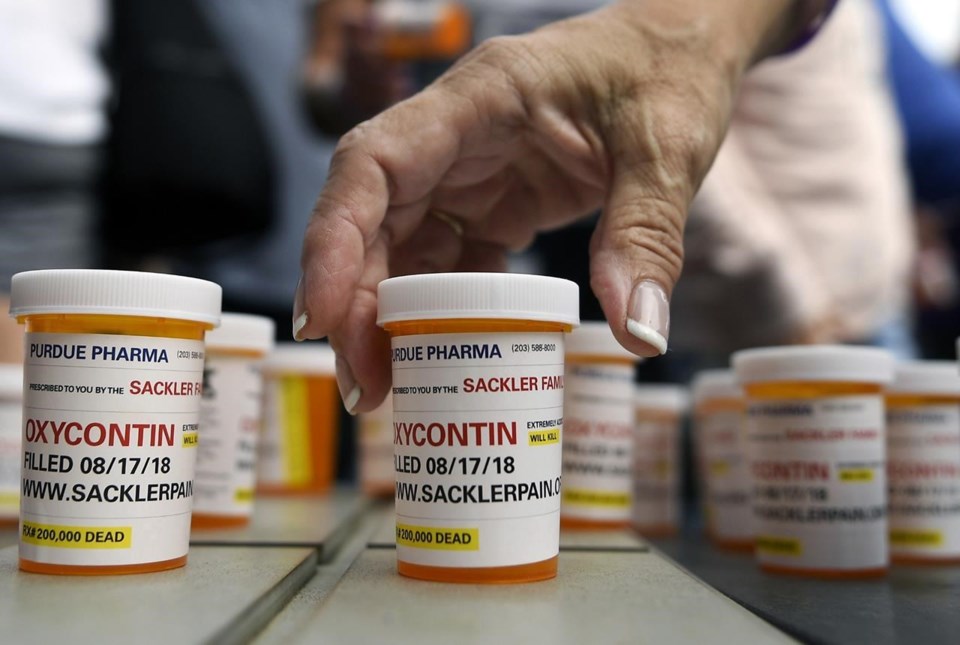More than a year after OxyContin maker Purdue Pharma reached a tentative settlement over the toll of opioids that was accepted nearly universally by the groups suing the company — including thousands of people injured by the drug — money is still not rolling out.
Parties waiting to finalize the deal are waiting for a court to rule on the legality of a key detail: whether members of the Sackler family who own the company can be protected from lawsuits over OxyContin in exchange for handing over up to $6 billion in cash over time plus the company itself.
This week — days before the one-year anniversary of the April 29, 2022, appeals court arguments on the matter — lawyers told judges that the wait is causing problems.
Lawyers on multiple sides of the case, including those representing Purdue, asked the 2nd U.S. Circuit Court of Appeals in New York to issue a ruling or provide an update soon, saying the efforts to use the funds to fight the opioid crisis can't begin until the money can start to flow.
While it’s not unusual for an appeals panel to take a year or more from a hearing until it releases a decision, this case was originally fast-tracked by the court. At the hearing last year, there were signs that the three-judge panel might not rule unanimously.
A lawyer for creditors told a U.S. bankruptcy court in another filing this week that the wait is a problem for other reasons. The lawyer, Arik Preis, wrote that as long as the funds aren't distributed, “the vast majority of more than $6 billion that could be put to use to abate the opioid crisis and compensate individual claimants continuing to accrue interest in Sackler accounts.”
While most of Purdue's creditors have signed onto the settlement, the U.S. Bankruptcy Trustee is objecting.
With the case stretching out, the legal costs continue to mount, too. Purdue reported in a court filing that as of March 31, it had spent about $900 million on nonrecurring legal fees since it filed for bankruptcy in 2019 as part of an effort to settle its lawsuits.
Purdue's proposed settlement is not the biggest in a series of opioid-related settlements in recent years that totals over $50 billion, but it is large and closely watched because of the blame many have given the company for its role in sparking the crisis with its marketing of OxyContin starting in the 1990s.
The settlement also is the only one so far where some of the money is to go directly to people who lost loved ones or years of their own lives to opioids. About 149,000 individuals made claims and could receive between about $3,500 and $48,000 each from the settlement.
One of them, Lindsey Arrington, does not know how much she'll qualify to be paid. The Everett, Washington, woman whose substance abuse disorder began with OxyContin she used as a teenager, said money would be helpful.
“I'm 12 years into my recovery from addiction and I'm still cleaning up the financial wreckage,” she said.
There were debts, including paying back the Washington state government for assistance she should not have received because her son, now 14, was not living with her at the time.
And some money could help her relationship with him. “I owe it to him to use some of the money to do something for him or with him as a symbolic gesture of the time that we lost, that we could have had together had it not been what I was going through,” she said.
Stephanie Lubinski, one of about two dozen victims who testified at a hearing last year that Sackler family members attended by Zoom, doesn't know how much she might be granted under the settlement either. In the grips of an opioid addiction, her husband, a former Minneapolis firefighter, killed himself in 2020.
Lubinski, who has cancer, hopes to have the settlement in hand while she's alive so she can pass it to her adult children.
“It’s like by keeping it going and going," she said, "we’re replaying all the emotions and suffering.”
Geoff Mulvihill, The Associated Press



